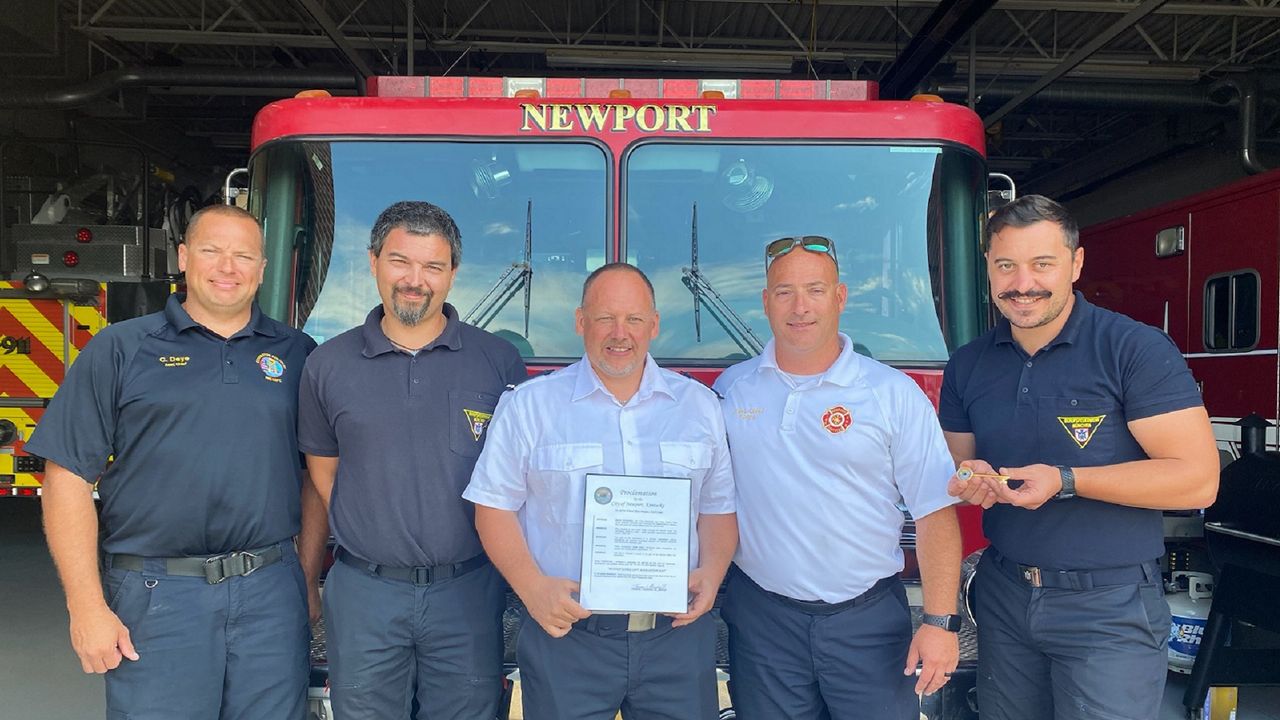CINCINNATI — An exchange program between the City of Munich and several greater Cincinnati fire departments is spotlighting the differences between fire service in Europe and the United States and exposing participants to potential new ways of doing their jobs.
Despite the differences, though, the program is also revealing what all firefighters share in common.
What You Need To Know
- Three firefighters from Munich, Germany, spent three weeks in greater Cincinnati as part of a professional exchange program
- Each of the firefighters spent a week working with fire departments in Cincinnati in Ohio, Covington and Newport in Kentucky
- The goal of the program is to promote the exchange of ideas, technologies and approaches to improve firefighting
- It's part of the Sister Cities relationship between Cincinnati and Munich
The City of Cincinnati and the cities of Newport and Covington, Ky., recently hosted a trio of veteran German firefighters for three weeks as part of an education exchange program with Munich.
German Firefighter Philip Knecht was part of the firefighter group that arrived in Cincinnati on Aug. 30. All three men had been to the U.S. in the past, but this was his first time in this part of the country.
“It’s a beautiful city and part of the country,” Knecht said about Cincinnati. “They showed us some older parts that are getting redone and like the city centers, and everything is just really beautiful.”
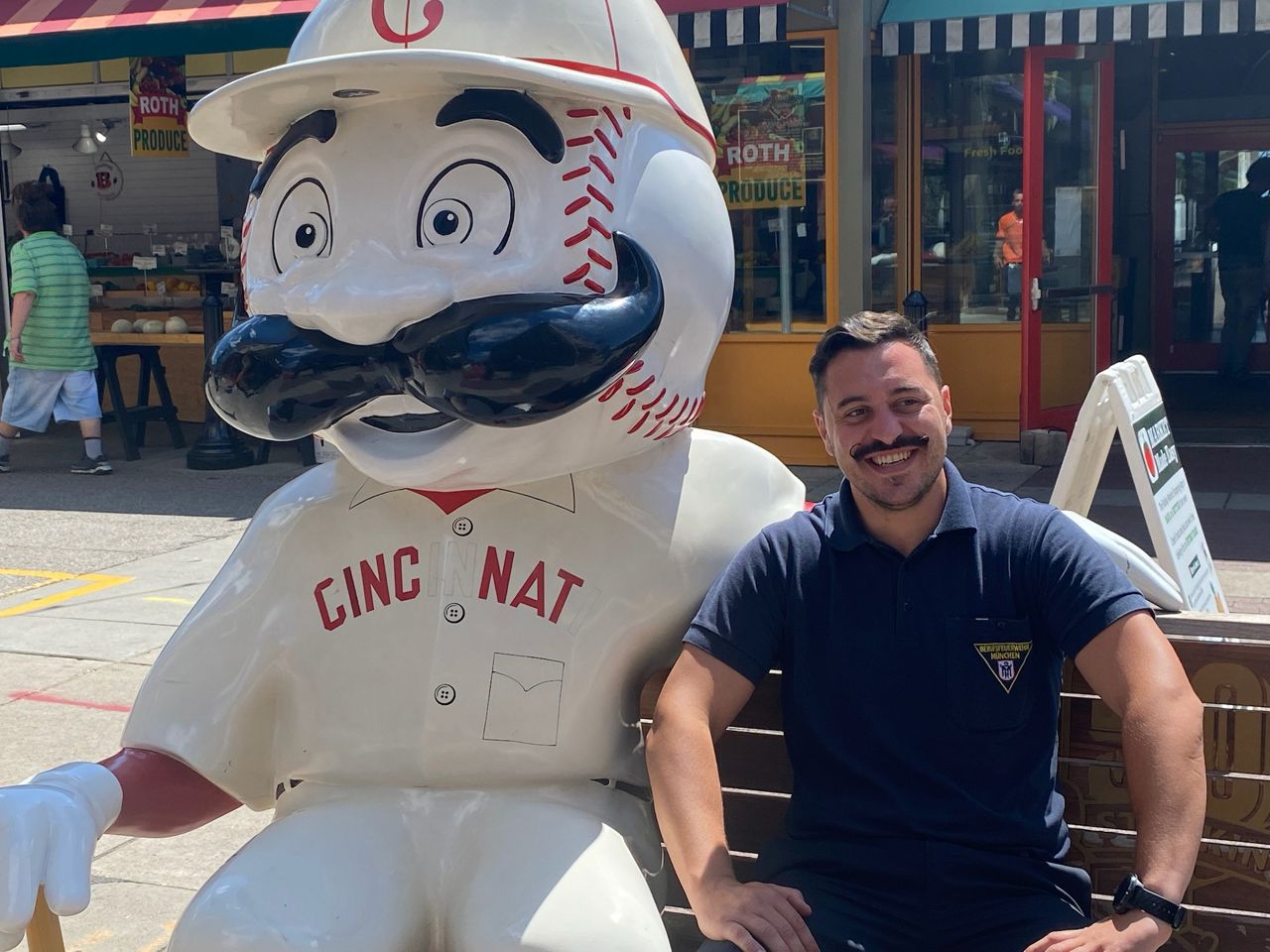
Knecht, who’s been a firefighter since 2015, felt lucky to be in town for Oktoberfest Zinzinnati, Cincinnati’s version of the famed celebration that originated in Munich. He actually got on stage and danced during the event.
“I had to say no to the chicken dance, though,” he said with a laugh.
Markus Brandstetter voiced surprise over Cincinnati’s extensive German heritage. He noted the number of German-style beer gardens they visited and the variety of Bavarian foods he encountered while in town.
He described the Hofbräuhaus in Newport as feeling “exactly the same as in Munich.”
During their three-week stay in greater Cincinnati, the German contingent toured local sites and met elected officials. They also sampled the local cuisine, including Cincinnati-style chili.
Newport Mayor Tom Guidugli even presented them with a proclamation and a key to the city.
The program is part of Cincinnati’s decades-old relationship with Germany’s third-largest city through the Sister City Association. The organization promotes professional and cultural exchanges as learning opportunities among professionals in various fields between cities around the world.
For this trip, all three firefighters — Knecht, Brandstetter and 22-year veteran Jan Hamacher — worked normal shifts alongside local firefighters. As a group, they worked a week in Cincinnati, Covington and Newport.
The group mostly worked 24-hours shifts and stayed in the firehouse where they worked.
“When Munich guys come over here, they’re required to get their hours in as far as what they would work back home,” said Newport Assistant Fire Chief Scott Kohrs.
Working a day in someone else’s fire boots
During their time in greater Cincinnati, the exchange firefighters responded to house fires, vehicle extractions, drug overdoses, health scares, even river rescues. They also took part in daily training exercises to keep their skills sharp.
Knecht, who’s trained as a dispatcher, was surprised to see 911 dispatchers send someone to every call. He noted that in Munich, they’ll assess the situation and sometimes advise callers to go to the emergency room or the doctor rather than sending an ambulance.
“It was confusing to me at first because that’s just not how we do things in Germany,” he added.
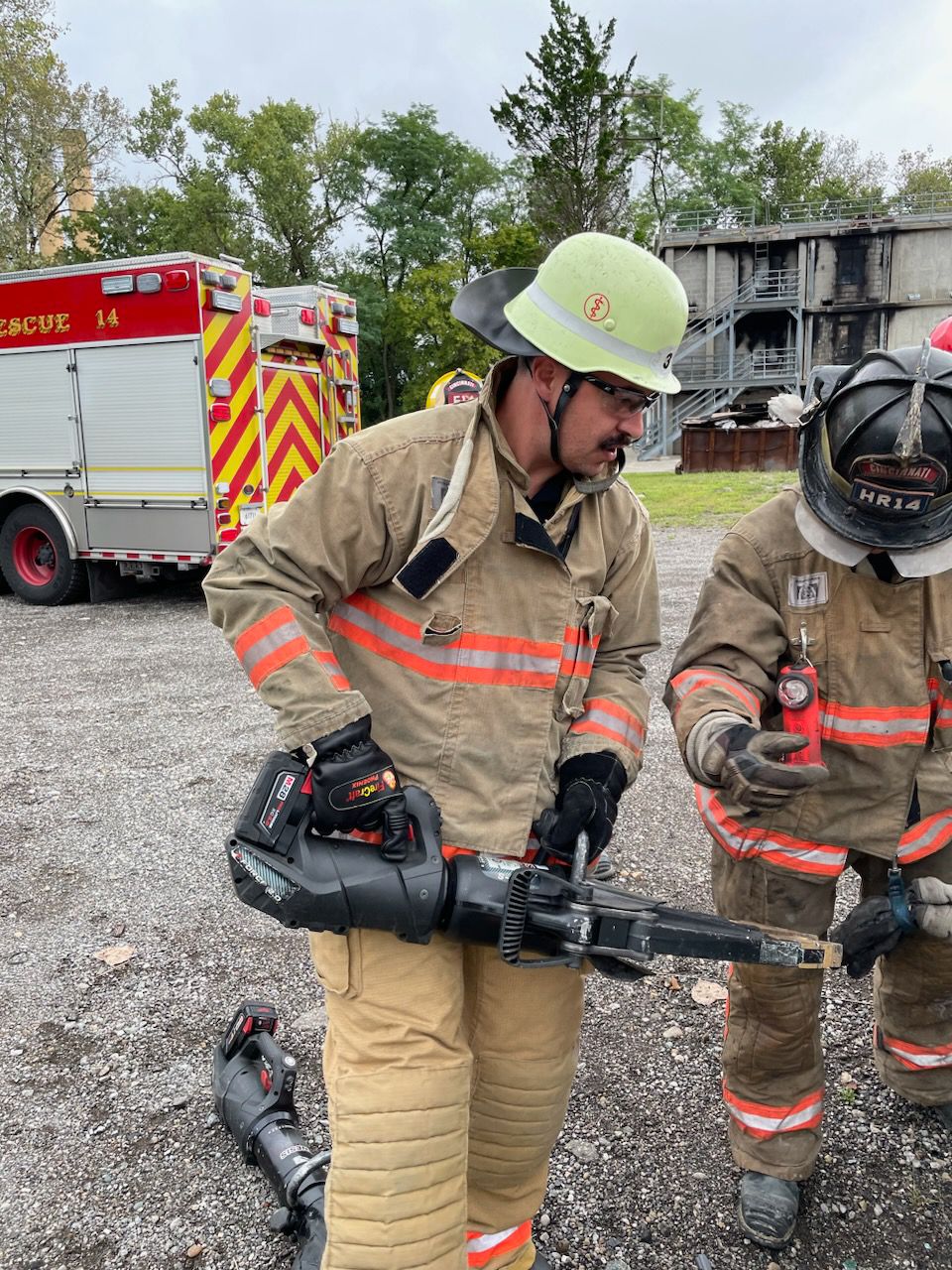
Capt. Mark Flagler, who was part of the first exchange trip to Germany in 2014, said the exchange exposes firefighters to how things happen stateside.
“We wanted them to enjoy their time here, but the primary goal was to have an education exchange,” said Flagler, who works in CFD’s training center. “This was an opportunity to teach them how we do things and it also gave us a chance to learn what they do differently back home.”
Most firefighting skills are “pretty similar, if not universal,” Flagler said, but there are some nuances based on unique elements of the specific districts.
In the United States, for instance, firefighters have a higher call volume overall, Flagler said. One of the biggest takeaways for the German firefighters, Flagler said, was likely learning more about performing trauma care in the streets.
In their combined 51 years of fire service, none of the three Munich firefighters had responded to a gunshot victim. “Shootings don’t happen very often in Munich, luckily, so it’s a very big deal when one happens,” Brandstetter said. “Here, they happen weekly, so it’s a part of normal life.”
While Hamacher described shootings and serious auto accidents as “tragedies,” he feels experiencing them firsthand was an important training opportunity because it gave them a chance to use skills they’d only used in training.
“We don’t have many entrapments inside the City of Munich, because the speed limit is really low and the police are enforcing it really hard, so our professional firefighters are not so good with all that stuff because they don’t do it often enough,” he said. “We train, we train, we train, but we never actually have to call for it, so we’re not as good or as fast.”
Hamacher noted being impressed by the Cincinnati Fire Department’s heavy rescue team, which handles everything from hazardous material threats to building collapses to water rescues.
While driving with Heavy Rescue 14, Hamacher responded to a vehicle entrapment on Interstate 471. He noted how quickly they responded to the scene and then, once on the scene, how quickly they acted.
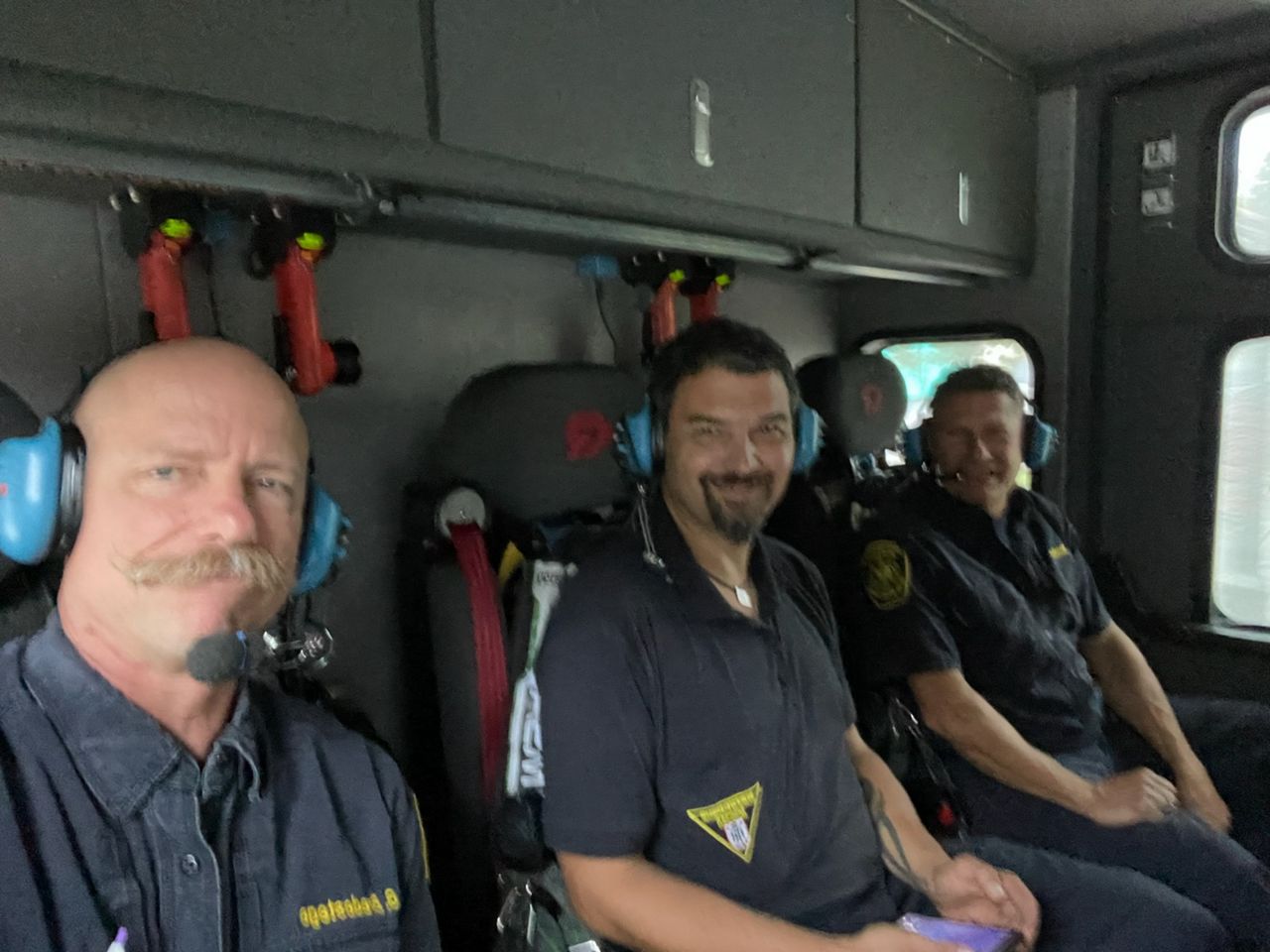
“It was just boom, boom, boom, and after just two-and-a-half or three minutes, the person was out and safe in the ambulance,” he said. “That was extremely impressive for me.”
The tools German firefighters use in those situations are a little different, Knecht said. They use hydraulic-powered equipment while firefighters in the U.S. use what’s called a “scissor and spreader” system to cut into and open a vehicle.
They plan to discuss the U.S. technique with their superiors when they return home.
The tactics for battling a fire here are also different, Hamacher said, because many buildings are constructed from wood, while in Munich they are mostly made from brick or stone. Germany also has tighter streets and taller buildings, which means firefighters in Munich can’t attack fires by cutting into the structures the way they do here.
“I was impressed by the way these guys go into a fire, like cutting up the roof,” he added. “In Germany, we don’t have a lot of houses, so we’re living in apartments a lot. In the cities, we’re unable to open up the roof in a lot of buildings because you have apartments all the way up.”
Hamacher also noted that U.S. fire departments have a lot more fire stations than back in Germany.
In Cincinnati, for example, there are 26 firehouses spread across four districts over 80 square miles.
By comparison, there are only 10 fire stations to cover 120 square miles in Munich. The department has about 1,500 firefighters.
“In the U.S., it’s about getting there as fast as possible. They want to have one department arrive on scene as fast as possible and then call for help,” Hamacher said. “In Munich, we rely more on strategy.”
Learning from differences, celebrating what’s similar
Kohrs and Flagler were both part of the first Cincinnati-Munich firefighter exchange in 2014. Plans for a second trip to Munich in 2020 or 2021 were derailed by the pandemic, Flagler said. Munich sent its first group to the Queen City in 2019.
“When we were over there, we learned a lot about their use of technology in firefighting, and then also how they’ve really used fire prevention and building construction to kind of get ahead of preventing fires,” Flagler said. “They’re really proactive in that area and it’s something that we’re striving to emulate over here.”
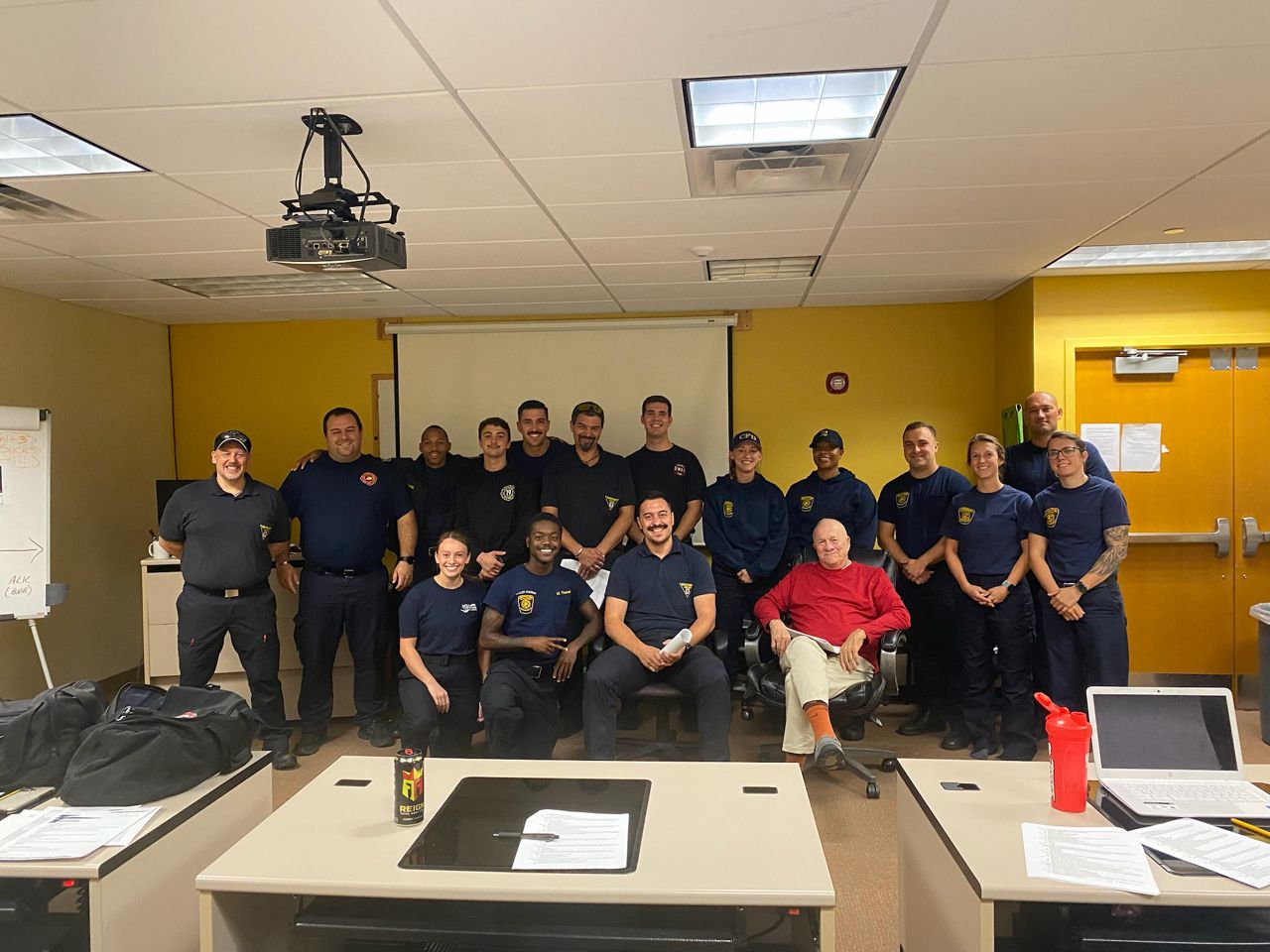
Kohrs said the trips introduce firefighters to new ideas, techniques and even entirely different technologies.
As an example, Kohrs said how German firefighters are trained to handle biohazards and firehouse cleanliness is “completely different” from the way many United States fire departments do things.
He gave examples of things like how they clean and organize their firehouses. He also noted German firefighters change their pants before every time they leave the fire station to keep from spreading toxins.
“We do things similarly, but in some areas they take it to another level,” Kohrs said.
Hamacher said that while there were some differences in the job, a few personality traits of firefighters are fairly universal. He cited the frequent pranks and teasing, which helps lessen stress.
“It’s like a family,” he said. “We may not all do things the exact same way, but we all think very similarly. No matter where in the world you are working or the language you speak, we are all firefighters.”
Flagler echoed those thoughts, calling firefighting the “international language.”
“Even with language barriers and being in a different country, the culture of being a firefighter is so much more similar than all those differences,” he said. “Even when we were in Germany and didn’t speak the language, within two days of being in the firehouse, we knew exactly what the routine was.”



